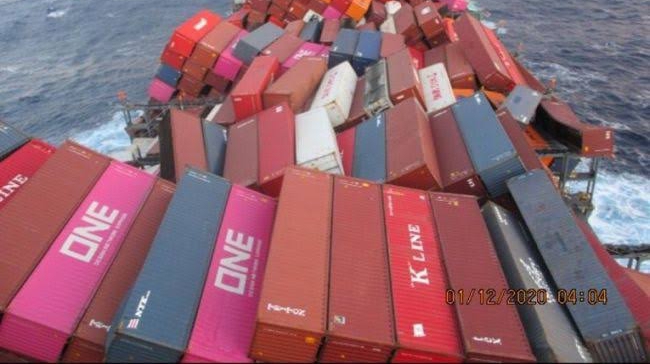The World Shipping Council (WSC) has released its annual Containers Lost at Sea report, shedding light on encouraging developments regarding boxes safety in the international liner shipping industry.
According to the report, the number of containers lost at sea fell to just 661 in 2022, marking a significant drop from the two years prior primarily due to a dearth of significant-loss events last year.
The number highlights the industry’s strides in improving container safety, but also serves as a reminder of the constant vigilance required to ensure the well-being crews and the safeguarding of valuable cargo and the environment.
“The reduction in containers lost at sea in 2022 is positive news. However, we can’t afford complacency. We are committed to making the sea safer for work, protecting the environment, and cargo by reducing the number of containers lost at sea,” said John Butler, President & CEO of the WSC.
The WSC notes that container safety is a shared responsibility across the supply chain. Key factors include proper packing, stowage, securing of containers, and accurate weight reporting. Daily, liner carriers collaborate with partners to prevent incidents and ensure safe container transport.
Of the estimated 250 million containers shipped annually, the 661 containers lost represent a mere 0.00026%, translating to a significantly low loss compared to the more than $7 trillion in cargo transported each year. Over the fifteen-year period surveyed (2008-2022), an average of 1,566 containers were lost at sea each year.
- Advertisement -
However, yearly losses can vary widely due to significant loss incidents, such as the MV Rena incident in 2011 where 900 containers were lost and the MOL Comfort incident in 2013, where a record 4,293 containers were lost when the ship sank in the Indian Ocean. An unusually high number of weather-related incidents in 2020 and 2021 led to an average loss of 3,113 containers lost over the two years. The spike can be attributed to significant container loss incidents in the Pacific Ocean, including the ONE Apus, which lost more than 1,800 containers in severe weather in November 2020, and the Maersk Essen, which also experienced severe weather in 2021 that resulted in the loss of some 750 containers overboard.
The average number of containers lost for the last three years (2020-2022) now stands at 2,301 containers per year, a significant rise from the 779 lost on average each year during the previous three years (2017-2019).
Working with governments and stakeholders to minimize containers losses at sea, the liner shipping industry continues strive towards enhancing container safety. In 2021, WSC and several member lines, alongside maritime stakeholders, initiated the MARIN Top Tier project. The project’s research provides data on the causes of containers overboard and measures to prevent such incidents. The research includes the production of training materials, videos, and calculators to help mitigate dangerous situations.
The project is also investigating container and lashing gear strength, stowage planning and optimization, guidelines for vessel operations, and voyage planning. As it enters its final year, the project aims to offer industry best practices, updated safety standards, and recommendations.
On the regulatory front, the WSC reports progress is being made in container safety. The Maritime Safety Committee (MSC 105) approved a revision of IMO’s guidelines for container inspection programs. Also, the WSC has advocated for mandatory reporting of lost containers, a proposal that will be considered by MSC 107 this year.
Accurate data is crucial in the pursuit of enhanced container safety. As part of their advocacy, the WSC has reported on containers lost at sea since 2011, and had published a report every three years. However, on response to the unusually high number of incidents in 2020-2021, WSC has increase the frequency of its report to annually.
The WSC has consistently worked to improve safety in container handling and transport since its inception, resulting in enhancements to the Safety of Life at Sea (SOLAS) convention, the creation and promotion of the Code of Practice for Packing of Cargo Transport Units (CTU Code), and ISO standards for container lashing equipment and corner castings.




Comments are closed.